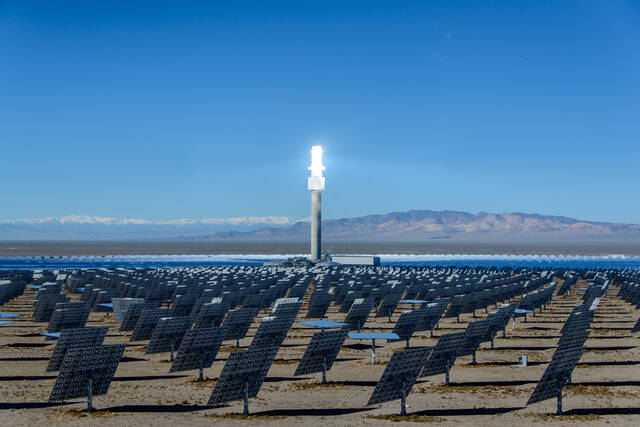COMMENTARY: Solar development, conservation must go hand in hand in Nevada

Early in 2023, the Bureau of Land Management released the draft Public Lands Rule, a groundbreaking, once-in-a-generation proposal to restore balance to its management of 245 million acres of public land across the American West. America’s public land includes 48 million acres in Nevada, of which an overwhelming majority are currently open to oil and gas leases.
After 40 years of prioritizing extractive industries, the BLM now has the opportunity to balance its multiple use mission by putting conservation, cultural lands protection, recreation, access to nature, wildlife and climate change mitigation on equal footing with America’s energy needs.
What does this mean for Nevada, where 63 percent of the state is federal public lands managed by the BLM? After more than a year of growing support in public meetings and a formal public comment period that yielded more than 90 percent of comments in favor of the rule, the final regulation is poised to be rolled out in the next few months. Once finalized, local communities — which have long called for a more sustainable approach to land management — can begin working with local BLM field offices to rebalance conservation and recreation with resource extraction and development.
Importantly, the BLM is also working to ensure that public lands do their part in meeting our nation’s renewable energy goals. In Nevada, that means a carefully constructed solar energy plan that is built with the dual purpose of clean, safe electricity to Nevada communities while developing solar projects in a way that protects wildlife, landscapes and the health of the Nevada desert.
The Public Lands Rule is one of several proposals announced recently by the BLM. Another includes an update to its 2012 Western Solar Plan. The Solar Programmatic Environmental Impact Statement will identify reasonable areas available for solar development, without interrupting the processing of existing solar energy applications. In fact, it will help accelerate implementation of national clean energy goals. The proposal will steer solar development to more appropriate landscapes, using criteria such as proximity to transmission infrastructure while avoiding protected lands, designated critical habitat and areas where important cultural resources exist.
If I have learned anything from my time in nature, it’s that things must coexist in order to thrive and be successful. Our planet and we as inhabitants will not survive by focusing only on biodiversity loss or the need to transition to a clean energy economy to reduce and slow down the impact of climate change. We need a holistic approach that fully analyzes the impacts and creates a collective path forward.
The forthcoming Public Lands Rule and updated Western Solar Plan can and should go hand in hand to ensure that we can simultaneously combat climate change and the biodiversity crisis — achieving our clean energy goals while protecting important landscapes and habitats in a “smart from the start” planning approach.
Diverse supporters from across the country have recognized the opportunity the BLM’s new rule presents and have raised their voices in support, including individuals who weighed in during the public comment period, endorsements from the outdoor industry, members of Congress, local elected officials, legal scholars, scientists, attorneys general, former BLM officials, hunters and anglers and more than 100 businesses. The process to finalize and implement the solar plan is no different, and the BLM will be hosting public meetings during the comment period, which runs through April 18, to provide information and answer questions.
As the world faces staggering nature loss and disappearance of biodiversity, these BLM lands are vital “connective tissue” across the western United States, providing critical migration and habitat corridors for wildlife between big wilderness areas and national conservation areas and monuments, and smaller private, state and county lands. The BLM and Biden administration must be commended for recognizing the importance of our nation’s public lands to our environment, local economies and renewable energy future. The Public Lands Rule and an update to the Western Solar Plan are long overdue, especially for the future of the American West.
Jocelyn Torres is co-interim executive director of the Conservation Lands Foundation, a nonprofit organization dedicated to protecting and expanding America’s national conservation lands.























